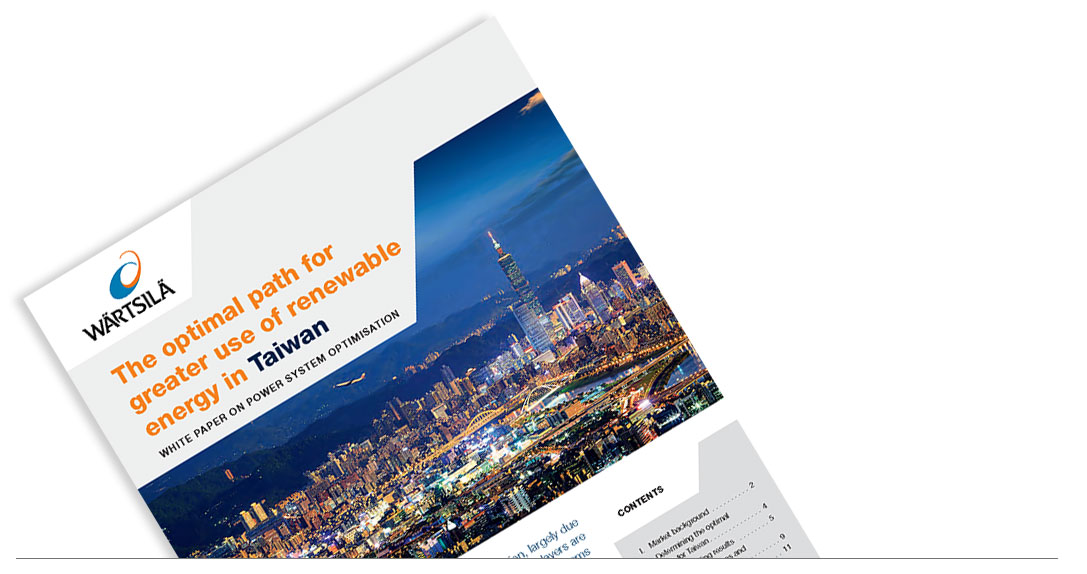

The optimal path for greater use of renewable energy in Taiwan
The global energy market landscape is in transition, largely due to the rapidly decreasing cost of renewables. Major players are moving towards more flexible and sustainable energy systems with a rapidly increasing share of renewable energy, declining inflexible baseload generation and a wider application of flexible power generation and energy storage technologies.
In Taiwan the government’s planned power generation mix for 2025 is 20% renewables, 30% coal and 50% natural gas, with all existing nuclear reactors retired before the end of 2025 as part of the island’s “nuclear free homeland” vision. The target is to install 27 GW of renewables, including 20 GW of solar PV and 6.7 GW of wind power by 2025.
In this study we used PLEXOS® energy simulation software to model the optimal investment path for meeting Taiwan’s goal of 20% renewable energy by 2025 while ensuring efficiency, reliability and a reduction in costs. The modelling demonstrates that Taiwan can cost-effectively increase the amount of renewables in the system well beyond 20%. Flexibility in the form of gas-powered engine power plants – which can be ramped up and down quickly to cope with fluctuating demand – is needed to cope with the intermittency of renewables. We will also show why investing in traditional thermal baseload today will restrict the country’s alternatives in the future, whereas a flexible system will keep the option open to achieve a high renewable power system in the future even faster.
Contents
- Market background
- Determining the optimal path for Taiwan
- The modelling results
- Recommendations and benefits
- Conclusion

